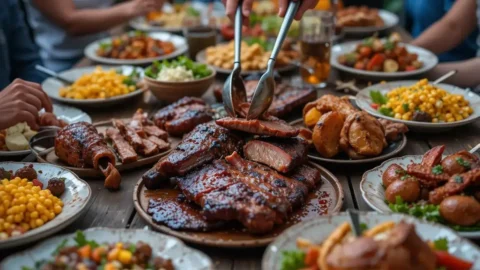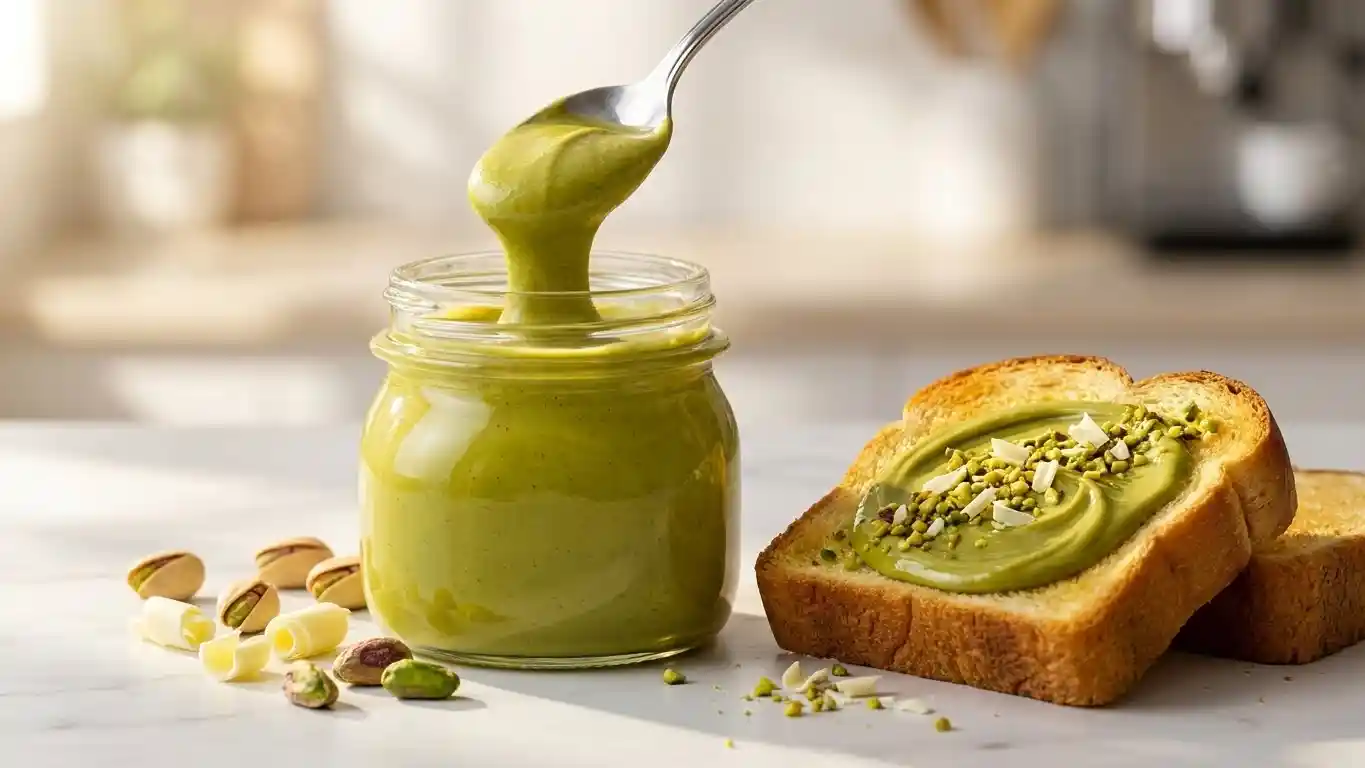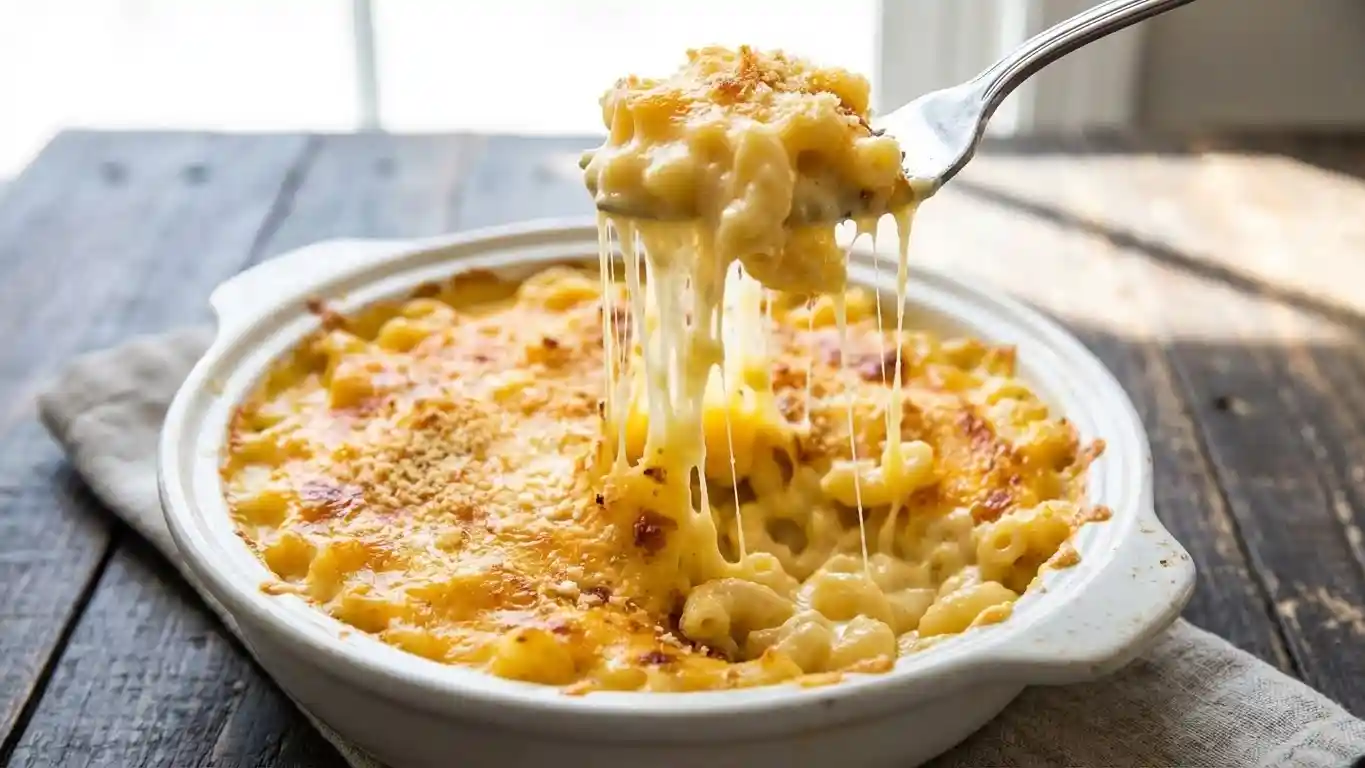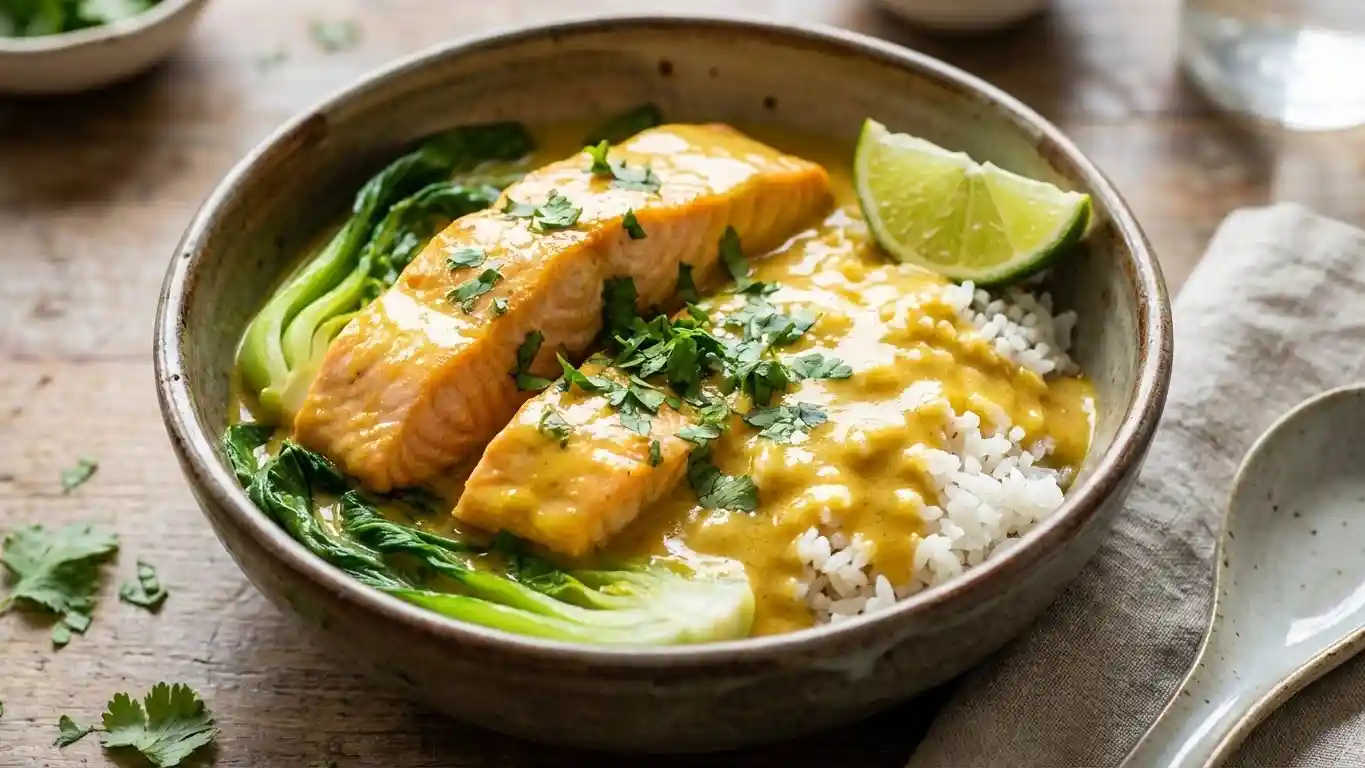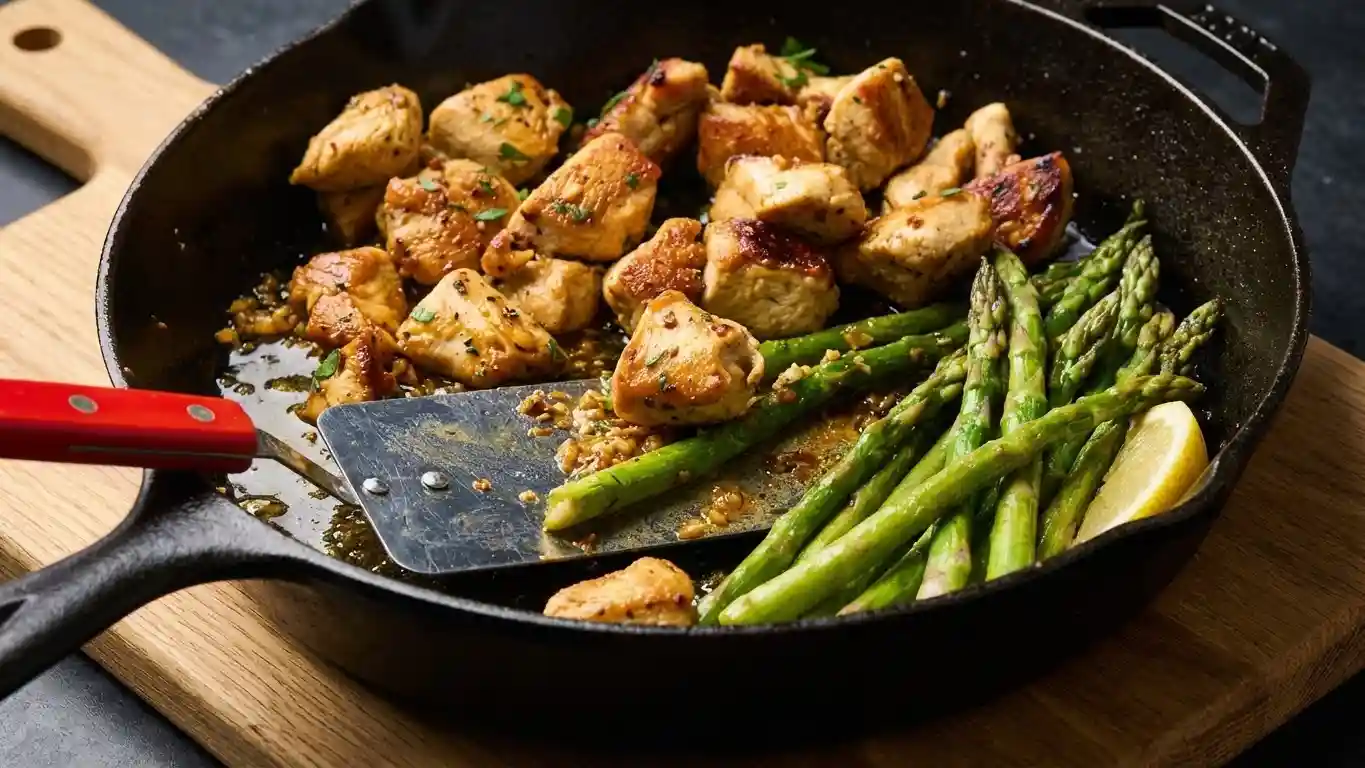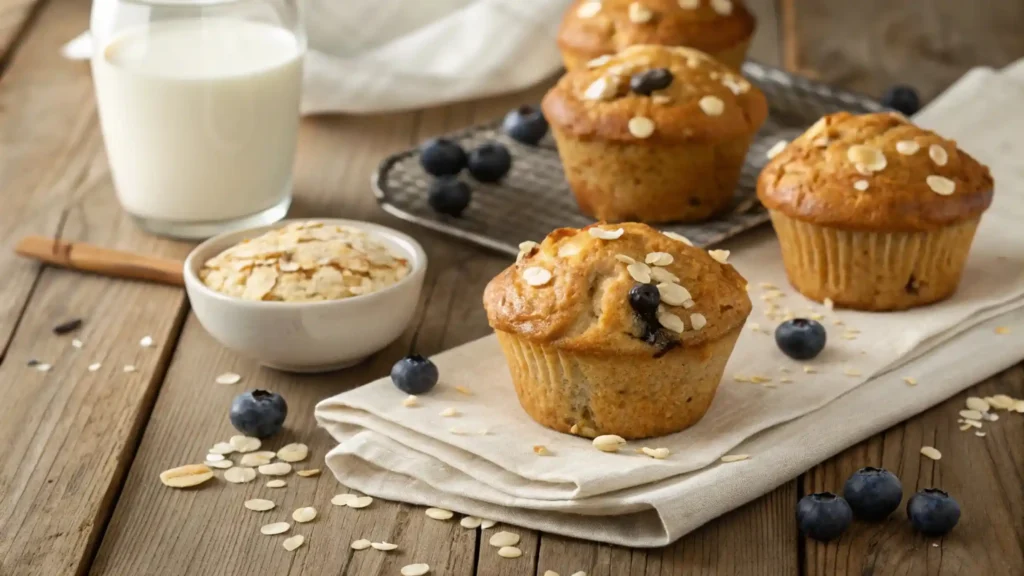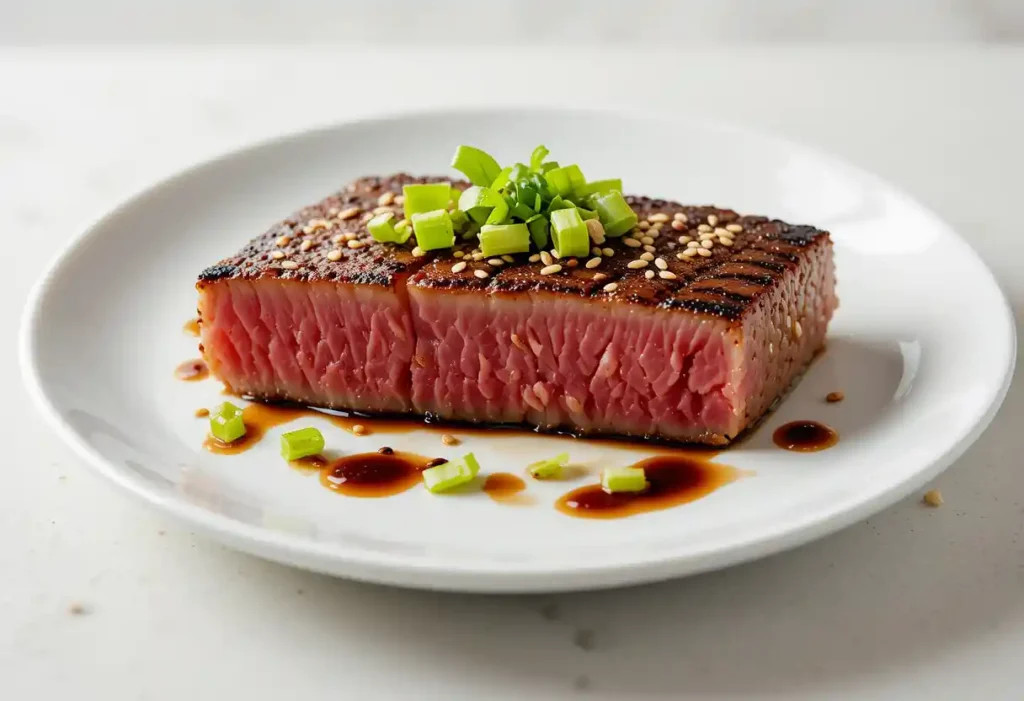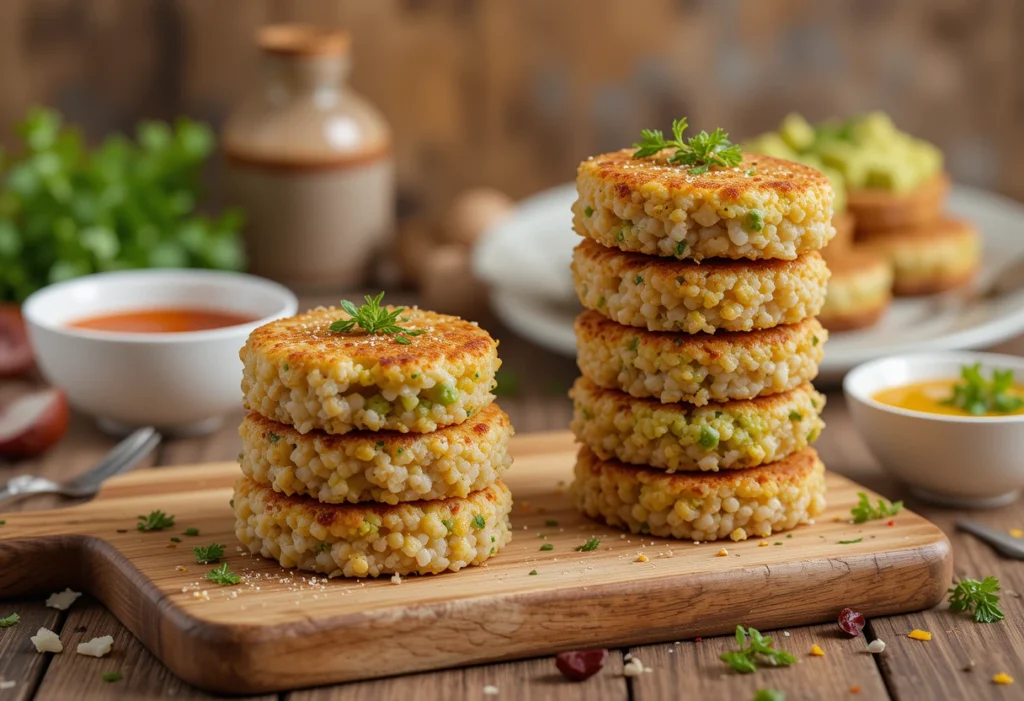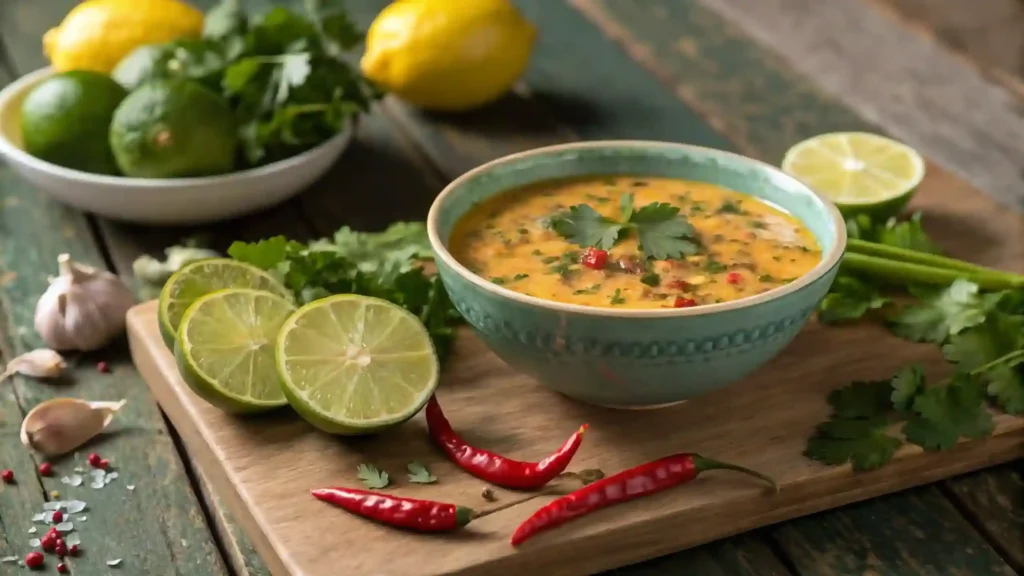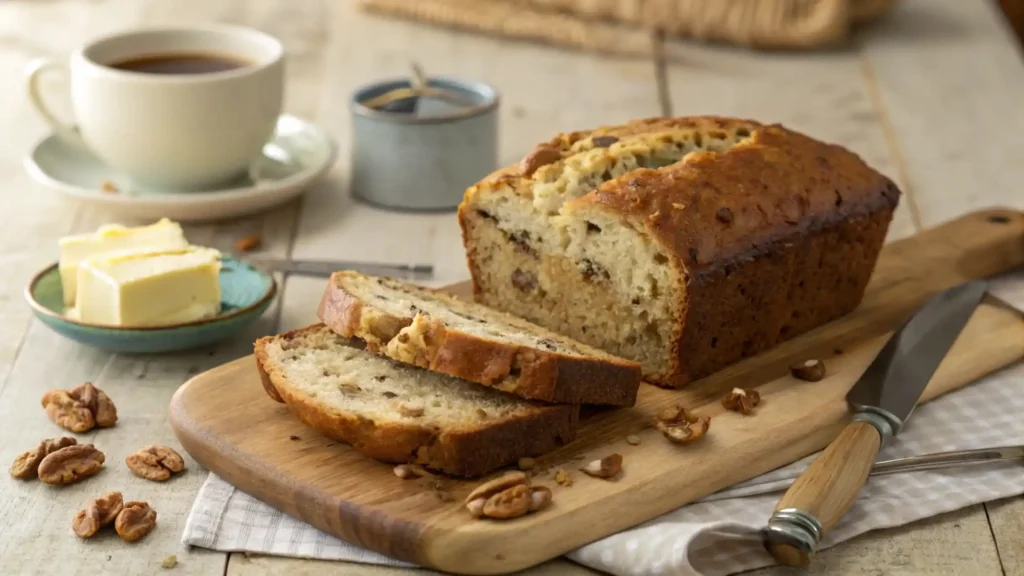Are you ready to take your BBQ game to the next level? If you’re looking to impress your friends and family with smoky, tender, and flavorful dishes, smoker recipes are the perfect choice. Whether you’re a seasoned pro or just starting out, smoking your meat adds a depth of flavor that grilling alone can’t match. Picture this: a juicy, slow-cooked brisket with that perfect smoky finish, or succulent ribs that practically fall off the bone. The best part? Smoking isn’t just about the meat; it’s about the experience.
Table of Contents
1. Key Benefits of Smoker Recipes
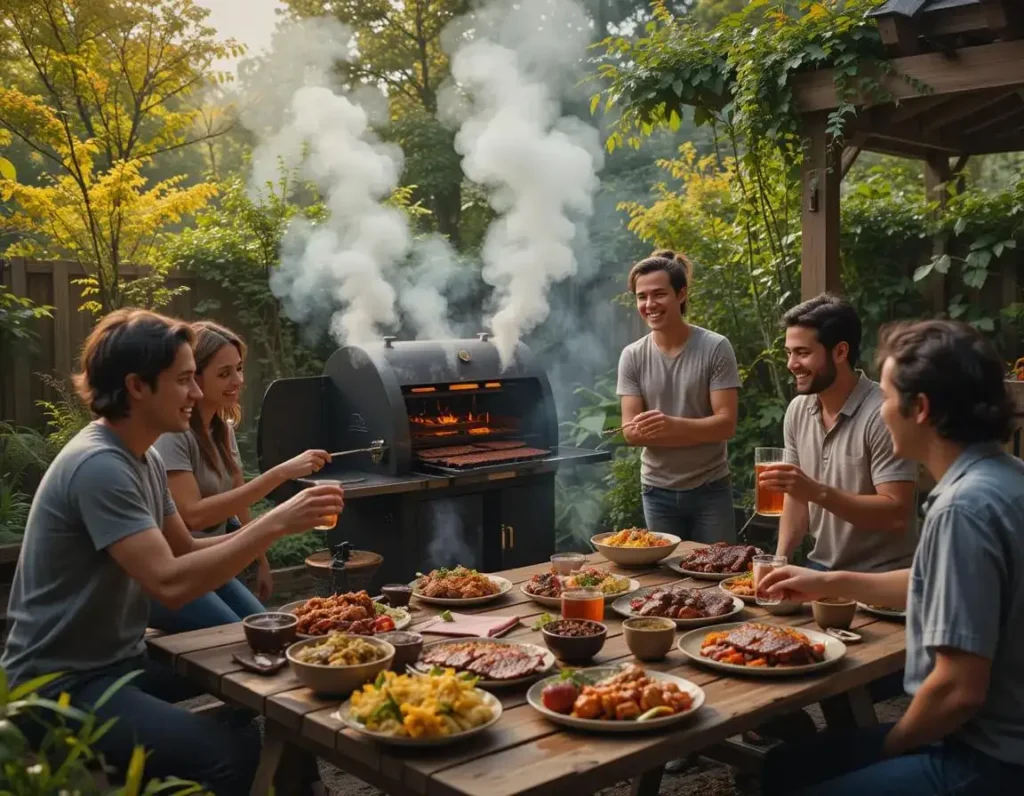
If you’ve ever wondered what makes smoker recipes so special, here’s the inside scoop: smoking your food creates layers of flavor that other cooking methods just can’t match. When done right, smoking infuses your meat with a rich, smoky taste, while also keeping it incredibly tender and juicy. Plus, it’s a hands-off way to cook, allowing you to enjoy time with your friends and family while your smoker does the work.
Here are some key benefits of smoking your next meal:
- Enhanced Flavor: Smoking with wood chips like hickory, cherry, or applewood adds a depth of flavor you simply can’t achieve with regular grilling. Each type of wood imparts a unique smoky essence, making each bite a new experience.
- Tender, Juicy Meat: The slow and steady cooking process of smoking breaks down the connective tissue in meat, transforming even tougher cuts into melt-in-your-mouth perfection. Whether you’re cooking ribs, brisket, or chicken, you’ll notice a tenderness that is simply unmatched by other cooking techniques.
- Impressive Results with Minimal Effort: Smoking is a fairly hands-off process. Once you’ve seasoned and placed your meat in the smoker, it’s just a matter of maintaining the right temperature. This gives you the perfect opportunity to enjoy time with loved ones while your smoker works its magic.
- Versatility: Smoker recipes are incredibly versatile. You can smoke just about anything—from classic meats like chicken, ribs, and brisket to vegetables, cheeses, and even fruits. The possibilities are endless, making it easy to customize your meals for any occasion.
- Customizable: One of the best things about smoking is that you can experiment with different marinades, rubs, and wood chips to create your own signature flavors. Whether you like your BBQ sweet, tangy, spicy, or smoky, smoking allows you to tailor each dish to your personal taste.
Smoking not only brings out the best in your ingredients, but it also turns the cooking process into an event—a chance to slow down and savor the journey. So, if you’re ready to impress your guests with something truly special, smoker recipes are your ticket to making every meal an unforgettable experience!
2. Ingredients for Smoker Recipes

Now that you’re excited to get started, let’s talk ingredients! A great smoker recipe relies on fresh, high-quality ingredients that absorb all those delicious smoky flavors. Whether you’re smoking chicken, pork, or a juicy brisket, the right combination of meat, seasoning, and wood chips is key to getting the perfect result.
Here’s what you’ll need to create your next smoker masterpiece:
Main Ingredients:
- Meat of Choice:
The beauty of smoking is that you can use almost any meat! Some favorites include:- Whole chicken (perfect for beginners!)
- Pork ribs (fall-off-the-bone goodness)
- Brisket (for an impressive BBQ centerpiece)
- Beef short ribs or steaks (smoked to perfection)
- Salmon or trout (for a smoky seafood twist)
- Dry Rub:
A great dry rub is essential for adding flavor. You can either buy a pre-made rub or make your own! A basic rub might include:- Brown sugar
- Paprika
- Garlic powder
- Onion powder
- Salt and pepper
- Chili powder (for a touch of heat)
Tip: Don’t be afraid to get creative! Add your favorite herbs or spices like cumin, mustard powder, or smoked paprika to tailor the rub to your taste. Massage it well into the meat for an even coat.
Additional Ingredients for Basting & Glazing:
- Olive Oil or Melted Butter:
Basting your meat with oil or butter while smoking helps it stay moist and adds a glossy finish to your finished product. A simple brush of olive oil or melted butter can elevate the flavor and texture. - BBQ Sauce (Optional):
If you’re a fan of sweet or tangy sauces, consider glazing your meat with your favorite BBQ sauce during the final minutes of smoking. This allows the sauce to set, creating a delicious, caramelized coating. Just be careful not to apply it too early—sauces with sugar can burn at high temperatures.
Wood Chips for Smoking:
The right wood chips are essential for that distinct smoky flavor. Here are a few options depending on the flavor profile you’re after:
- Hickory: Offers a strong, smoky flavor that works perfectly with red meats like brisket and pork ribs.
- Applewood: A milder, sweet flavor, great for poultry like chicken and turkey.
- Cherry Wood: A subtly sweet and fruity wood that’s perfect for ribs or even vegetables.
- Mesquite: Strong and bold, ideal for beef and other hearty meats.
Extras (Optional):
- Lemon Slices, Fresh Herbs, and Garlic:
For an added punch of flavor, you can stuff your chicken or fish with lemon slices, fresh herbs, or even a few garlic cloves before smoking. This infuses your meat with aromatic notes that will surprise and delight your guests.
Water Pan (Optional but Recommended):
Adding a water pan to your smoker helps maintain moisture and regulate temperature. It’s especially useful for longer cooks like brisket or pork shoulder, ensuring that your meat doesn’t dry out.
Pro Tip: While the smoker does its magic, don’t forget to keep a thermometer handy to track the internal temperature of your meat. For chicken, you’re aiming for 165°F; for beef or pork, 190°F is perfect for tender, pull-apart goodness.
With these ingredients in hand, you’re well on your way to creating smoker recipes that will impress everyone at your next BBQ. It’s all about the balance of flavors, and with a little practice, you’ll master the art of smoking like a pro!
3. How to Make Smoker Recipes

Ready to start smoking your favorite meats? Let’s dive into the step-by-step process. Smoking meat may sound intimidating at first, but once you break it down, you’ll realize it’s all about patience, attention, and letting the smoker do the hard work. Here’s how to turn your ingredients into a flavorful, smoky masterpiece.
Step 1: Prepare Your Smoker
Before you do anything, you need to get your smoker ready. Whether you’re using a charcoal, pellet, or electric smoker, it’s important to get the temperature just right.
- Preheat your smoker: Aim for a steady temperature of about 225°F-250°F. This low-and-slow heat is what allows your meat to cook evenly and absorb that smoky flavor.
- Add wood chips: Soak your wood chips in water for at least 30 minutes (unless you’re using a pellet smoker). This helps create the ideal smoke. Choose the wood based on the flavor profile you’re going for (applewood for chicken, hickory for ribs, etc.).
- Set up a water pan: If you’re using a traditional smoker, place a water pan inside. This helps maintain moisture during the long smoking process and prevents your meat from drying out.
Step 2: Prepare the Meat
Now, it’s time to prep your meat.
- Trim the fat: For most meats, you’ll want to trim any excess fat. While some fat is necessary for flavor and moisture, too much can cause flare-ups and uneven cooking.
- Apply the rub: Coat your meat evenly with the dry rub, making sure it’s well-covered on all sides. Massage it in gently for the best flavor penetration. Let it sit for at least 30 minutes to absorb the flavors.
- Optional basting: If you plan to baste your meat with oil, butter, or a glaze, now’s the time to brush it on. This adds richness and a beautiful glossy finish.
Step 3: Smoking the Meat
Once your smoker is at the right temperature and your meat is prepped, it’s time to start the smoking process.
- Place the meat on the smoker: Position your meat on the grill grate, ensuring it’s not touching the sides of the smoker. You want a little airflow around it to ensure even cooking.
- Monitor the temperature: Keep the smoker temperature steady. Try not to open the smoker too often, as this can cause heat loss. Instead, use a meat thermometer to check the internal temperature of the meat without opening the smoker.
- Smoking time: The cooking time will depend on the type of meat you’re smoking. For example:
- Chicken: 1.5-2 hours
- Pork ribs: 4-5 hours
- Brisket: 8-12 hours
Step 4: Check for Doneness
While smoking is relatively hands-off, it’s important to check your meat as it gets closer to done. Here’s how you can tell:
- For chicken: The internal temperature should reach 165°F.
- For ribs: Check for tenderness. If the meat starts pulling away from the bone and has a nice, smoky bark, it’s ready.
- For brisket: You want an internal temperature of about 190°F for tender, juicy meat that’s easy to slice or shred.
Step 5: Rest and Serve
Once your meat reaches the perfect temperature, remove it from the smoker and let it rest for about 10-15 minutes. This helps redistribute the juices, ensuring your meat stays tender and moist when you cut into it.
- Slice and serve: After resting, slice your meat (if applicable) and serve it to your guests. Don’t forget to drizzle with some homemade BBQ sauce or a squeeze of fresh lemon if you’re working with chicken or fish!
Pro Tip: If you’re smoking large cuts like brisket or pork shoulder, wrap it in foil or butcher paper during the final hours of smoking. This helps the meat retain moisture and speeds up the cooking process while still allowing the smoke flavor to penetrate.
Smoking is a slow process, but it’s one that rewards you with amazing results. By following these steps and taking your time, you’ll be able to create smoker recipes that leave your guests asking for seconds (and maybe even thirds)!
4. Pro Tips and Variations for Smoker Recipes
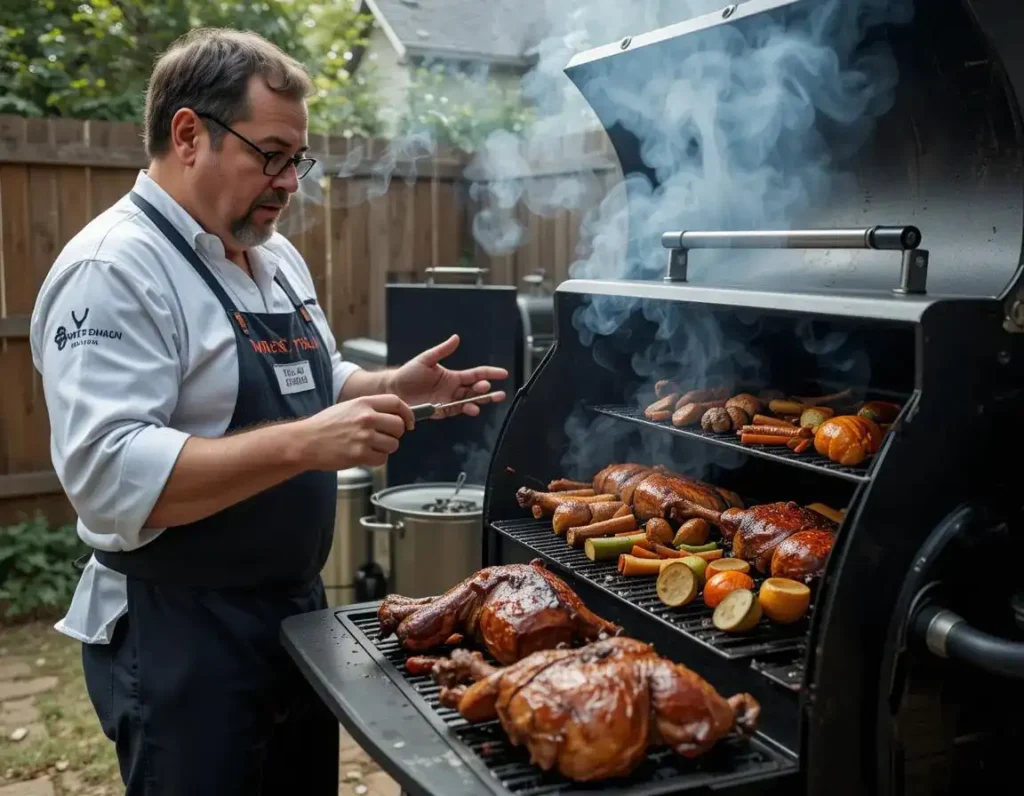
Smoking meat is all about patience, but with a few extra tips and creative variations, you can elevate your smoker recipes to a whole new level. Whether you’re a beginner or a seasoned pro, these pro tips will help you achieve consistent, mouthwatering results every time. Plus, we’ll explore a few variations to keep your smoker meals fresh and exciting!
Pro Tips for Perfecting Your Smoker Recipes:
- Maintain a Steady Temperature:
One of the most important factors when smoking meat is keeping the temperature stable. Too hot, and your meat will dry out; too cool, and it won’t cook properly. Use a reliable thermometer, both for your smoker and the meat, to ensure everything is cooking at the perfect temperature.
Tip: If you’re using a charcoal smoker, consider adding extra charcoal or adjusting the vents every couple of hours to maintain heat. - Let the Smoke Rest:
When smoking large cuts like brisket or pork shoulder, let the meat rest for 10-15 minutes before slicing. This allows the juices to redistribute, ensuring your meat remains tender and juicy. - Use a Meat Thermometer:
Even experienced smokers use thermometers to ensure precision. For poultry, aim for an internal temperature of 165°F; for beef, pork, or lamb, around 190°F is ideal for tender, pull-apart meat.
Tip: Insert the thermometer into the thickest part of the meat, avoiding bones, to get an accurate reading. - Consider the Meat’s Fat Cap:
Many cuts of meat, like brisket and pork shoulder, come with a thick fat cap. While some fat is good for flavor, you’ll want to trim it down to a manageable thickness—about 1/4 inch. Too much fat can create flare-ups and uneven cooking.
Pro Tip: Score the fat cap in a criss-cross pattern to help the rub penetrate better and the fat to render down during smoking.
Creative Variations to Try:
- Smoked Veggies:
Don’t limit yourself to just meat! Vegetables like peppers, onions, corn on the cob, and even sweet potatoes take on a whole new flavor when smoked. Toss them with olive oil, salt, and your favorite herbs before placing them in the smoker. They’ll absorb the smoky flavors and turn into a delicious side dish. - Fruit for a Sweet Twist:
For an unexpected dessert, smoke fruits like peaches, pineapples, or apples. The smoky sweetness of the fruit paired with a drizzle of honey or a sprinkle of cinnamon makes for a unique and refreshing end to your meal. - Brine Before Smoking:
For extra juicy poultry, try brining your chicken or turkey before smoking. A simple brine of water, salt, and sugar can help the meat retain moisture and enhance its flavor.
Tip: If you have time, brine your meat for 4-8 hours for the best results. - Experiment with Rubs and Marinades:
The beauty of smoking is that you can get creative with your flavors. While a basic rub of brown sugar, salt, and pepper is a classic, try experimenting with different spices like cumin, coriander, or mustard powder for a new twist.
Pro Tip: Marinate your meat overnight for maximum flavor infusion. You can also inject meats like pork or turkey with a flavorful marinade for a deep flavor profile. - Reverse Sear for Perfect Crust:
If you love a crispy, caramelized crust on your meat, try reverse searing. Smoke your meat to the desired temperature, then finish it on a hot grill or in a pan for 2-3 minutes per side. This adds a beautiful sear while preserving the tenderness inside.
Wood Pairing Tips for Unique Flavor Profiles:
- Hickory: Best for red meats like beef and pork, providing a strong, hearty flavor.
- Cherry Wood: Offers a mild, slightly sweet flavor perfect for pork, chicken, and even vegetables.
- Applewood: Ideal for poultry and fish, with a delicate, sweet smoky flavor.
- Mesquite: A bold and intense smoke, great for beef or game meats, but be careful—it can easily overpower delicate meats.
- Pecan Wood: A great all-rounder, especially for pork, poultry, and beef. It’s milder than hickory but still offers a robust flavor.
Pro Tip: Keep an eye on your smoke levels. Too much smoke can result in a bitter taste, so aim for a thin, blue smoke rather than thick, white smoke.
With these expert tips and creative variations, you can bring a new layer of flavor to every smoker recipe you try. Experiment, have fun, and remember—the best meals come from a mix of technique and creativity. Whether you’re smoking classic ribs or branching out into smoked veggies or fruit, you’re sure to impress your friends and family with these tasty variations!
5. Serving Suggestions for Smoker Recipes
Once you’ve crafted the perfect smoky dish, it’s time to think about how to serve it. Presentation and pairing can elevate your smoker recipes from good to outstanding. Whether you’re serving a casual family dinner or impressing guests at a BBQ, these serving suggestions will help you make the most of your smoked creations.
1. Classic Side Dishes for Smoked Meats
Smoked meats have a rich, bold flavor that pairs wonderfully with classic sides. Here are a few crowd-pleasing options:
- Coleslaw: The cool crunch of a tangy, creamy slaw is the perfect contrast to the smoky richness of grilled or smoked meats. Go for a vinegar-based slaw to cut through the fattiness of pork or chicken.
- Grilled Corn on the Cob: Brush your corn with a bit of butter and season it with salt, pepper, and a touch of chili powder. You can even throw it on the smoker for a smoky flavor that complements your main dish.
- Baked Beans: A sweet and savory side like baked beans adds a rich, comforting element to your meal. Consider adding bits of smoked bacon or ham to tie the flavors together.
- Garlic Mashed Potatoes: The creamy texture of mashed potatoes paired with a little garlic gives a warm and familiar side to balance the smokiness of the meat.
2. Fresh and Vibrant Sides to Brighten the Plate
For a lighter, fresher contrast, try pairing your smoked meats with these refreshing sides:
- Grilled Vegetables: Toss a variety of vegetables, like zucchini, bell peppers, and onions, in olive oil and seasoning, then grill them on the smoker. The char adds another layer of flavor, and the smoky veggies are a great balance to rich meats.
- Tomato and Cucumber Salad: A simple, crisp salad with fresh tomatoes, cucumbers, and a splash of olive oil and lemon juice helps cleanse the palate between bites of smoky meat.
- Pickled Vegetables: Pickles, pickled onions, or even pickled carrots can add a tangy, zesty kick that perfectly balances the richness of smoked meats.
3. Sauces and Condiments to Amplify Flavor
While smoked meats often shine on their own, a little sauce or condiment can take your meal to the next level:
- BBQ Sauce: A smoky or tangy barbecue sauce is an obvious choice. Try making your own for a more personalized touch. Whether you prefer a sweet and sticky sauce or a vinegar-based one, it adds an extra burst of flavor.
- Chimichurri: This Argentine sauce made with parsley, garlic, vinegar, and oil adds a fresh, herby contrast to the smoky depth of meats like ribs, brisket, or lamb.
- Hot Sauce or Sriracha: For those who love heat, a drizzle of your favorite hot sauce can add spice and enhance the flavors in your dish.
4. Garnishing Your Smoker Recipes
Don’t forget the power of a simple garnish. It can elevate the look and flavor of your dish:
- Fresh Herbs: A sprinkle of fresh parsley, cilantro, or basil can brighten up the dish and add a fresh, green pop.
- Lemon Wedges: A squeeze of fresh lemon on smoked meats like chicken or fish can balance the richness and add a refreshing citrus note.
- Chopped Green Onions: For an added crunch and a burst of color, garnish with freshly chopped green onions. They pair wonderfully with grilled meats and add a mild onion flavor.
5. Beverage Pairings to Complement Smoker Recipes
A great drink can make all the difference. Here are a few beverage options to pair with your smoked dishes:
- Beer: A cold, crisp lager or a smoky stout pairs wonderfully with smoked meats. The carbonation and maltiness of beer cut through the richness of the meat, creating a satisfying balance.
- Iced Tea or Lemonade: If you’re going for a non-alcoholic option, iced tea (sweet or unsweetened) or a refreshing lemonade can provide a crisp, light contrast to the smoky flavors.
- Red Wine: For a more sophisticated pairing, try a full-bodied red wine like Cabernet Sauvignon or a Zinfandel. Their bold flavors match well with beef or pork dishes.
6. Serving Smoker Recipes as a Meal
If you want to serve your smoked meats as part of a complete meal, consider the following:
- BBQ Platter: Serve an assortment of smoked meats (brisket, pulled pork, ribs, chicken) on a large platter for a feast. Add sides, sauces, and garnishes around the platter to make it visually appealing and easy for guests to help themselves.
- Smoked Meat Sandwiches: For a casual meal, pile your smoked meat onto soft, toasted buns and top with coleslaw or pickles. This is an excellent way to serve pulled pork or brisket.
With these simple yet impactful serving suggestions, you’ll not only elevate the flavor of your smoker recipes but also turn your meals into an unforgettable experience. From the perfect sides to the right drinks, every component will complement your smoked meats, creating a harmonious balance of flavors. Happy smoking and enjoy!
6. Conclusion
Congratulations! You’ve just unlocked the secrets to creating mouthwatering smoker recipes that will not only impress your friends and family but also elevate your BBQ game to a whole new level. Whether you’re smoking ribs, brisket, or chicken, this method allows you to infuse rich, smoky flavors while ensuring the meats stay tender and juicy. Now that you’ve learned how to prep, smoke, and serve, the sky’s the limit when it comes to experimenting with new flavors and techniques.

Why Smoker Recipes are Worth the Effort
While smoking meats might seem like a time-consuming process, the reward is well worth it. The slow cooking time allows the flavors to penetrate deep into the meat, making each bite an unforgettable experience. Plus, smoking gives you the flexibility to customize flavors, whether you’re using different wood chips, spices, or marinades.
The beauty of smoker recipes is that they can turn even a simple cut of meat into something extraordinary. And with the right techniques, you’ll find that smoking is less about being complicated and more about patience, passion, and experimentation.
Keep Practicing and Experimenting
If you’re new to smoking or just getting started, don’t worry if things aren’t perfect the first time. Smoking is as much about trial and error as it is about following instructions. The more you practice, the more you’ll get to know your smoker, how it behaves with different meats, and which flavors pair best with the dishes you’re preparing.
The best part? There’s always room to experiment. Play with different wood chips (like hickory, mesquite, or applewood) to find your signature smoky flavor. Or try out new rubs, marinades, and sauces to create unique variations of your favorite smoked dishes.
Smoker Recipes for Every Occasion
No matter the occasion—be it a casual family gathering, a festive holiday meal, or a big BBQ with friends—smoker recipes can be adapted to suit every event. From a full platter of smoked meats to smaller bite-sized appetizers, there’s always a way to make your smoked dishes fit the vibe of your gathering.
If you’re unsure where to start, try cooking up a basic smoked chicken or a classic rack of ribs and build from there. Once you’ve mastered the basics, you can get more creative by experimenting with different types of meat, sides, or flavor profiles.
Final Thoughts
Smoker recipes have a unique way of bringing people together around the table. With the right techniques, a little patience, and a lot of love, you can serve up something truly special that will leave everyone coming back for seconds. So go ahead—fire up that smoker and start making unforgettable meals!
Now, you’re ready to enjoy the process of smoking, cooking, and sharing delicious meals with the people who matter most. Happy smoking, and don’t forget to have fun experimenting with new flavors along the way!
Looking for more delicious smoker recipes? Check out our Raeger Recipes for unique flavor combinations and expert grilling tips—click here to explore the recipe!
7. FAQs
Smoking meats can be a bit intimidating at first, but don’t worry! I’ve gathered some of the most common questions about smoker recipes to help you feel more confident and ready to take on your next smoking adventure. Whether you’re a beginner or a seasoned pro, these answers will ensure that your smoking experience is smooth and delicious.
1. How long does it take to smoke meat?
The time it takes to smoke meat depends on a few factors, including the type of meat, its thickness, and the temperature you’re smoking at. For example:
Ribs typically take about 4-6 hours.
Brisket may take anywhere from 8 to 12 hours.
Chicken usually takes 3-4 hours.
Remember, slow and steady wins the race. Low
2. Do I need to use a smoker, or can I smoke on a regular grill?
Great question! While a dedicated smoker is ideal for even and consistent smoking, you can absolutely smoke meat on a regular grill by using the two-zone cooking method. Here’s how:
Set up your grill so there’s a direct heat side (for searing) and an indirect heat side (for smoking).
Add wood chips or chunks to the direct heat side, and then place your meat on the indirect side. This will create a smoky environment for the meat without direct contact with the flame.
It’s not as perfect as a dedicated smoker, but it still works wonders!
3. What wood chips are best for smoking meats?
The type of wood chips you use will dramatically impact the flavor of your smoked meats. Some popular options include:
Hickory – Great for pork and beef, offering a bold, smoky flavor.
Applewood – Ideal for chicken and pork, providing a mild, sweet smokiness.
Mesquite – Strong and robust, perfect for steaks or game meats.
Experiment with different wood types to find what suits your taste best!
4. Should I marinate my meat before smoking?
Marinating your meat can definitely enhance the flavor, but it’s not always necessary. It depends on the recipe and the cut of meat you’re working with. For example:
Brisket often benefits from a dry rub or a marinade for 12-24 hours before smoking to enhance the flavor.
Chicken can be marinated for 1-2 hours or coated with a simple rub just before smoking.
Marinating adds moisture and flavor, but sometimes a well-applied rub or sauce is all you need!
5. How can I keep my meat moist while smoking?
To keep your meat juicy during the smoking process, consider these tips:
Basting: Periodically baste the meat with its own juices or a marinade during the smoking process to lock in moisture.
Wrap in foil: For certain cuts like brisket, wrapping the meat in foil halfway through smoking (known as the “Texas Crutch”) helps retain moisture and speed up the cooking process.
Keep the smoker lid closed: Avoid opening the smoker too often, as this lets heat and moisture escape. Let the smoker work its magic!
6. Can I smoke vegetables?
Absolutely! Smoking vegetables adds a unique depth of flavor. Popular veggies to smoke include:
Corn on the cob
Bell peppers
Mushrooms
Onions
Simply coat them with olive oil and your favorite seasoning, and smoke them alongside your meats for a perfect side dish.
7. How do I know when my meat is done?
The best way to ensure your meat is cooked to perfection is by using a meat thermometer. Internal temperature targets vary by meat:
Pork: 190°F for tender, pull-apart results.
Beef (Brisket): 200°F for the best tenderness.
Chicken: 165°F to be fully cooked.
Ribs: Typically done when they reach 190°F for tender, juicy meat.
Having a thermometer on hand will give you peace of mind and ensure your meat is cooked just right!
8. Can I prepare smoker recipes in advance?
Yes, many smoker recipes can be prepared in advance! For instance, you can:
Marinate or season the meat a day before and store it in the fridge.
Preheat the smoker the night before and set everything up so it’s ready to go.
Make sauces and rubs ahead of time and store them in airtight containers.
Prepping in advance makes the smoking process smoother and allows you to enjoy your guests’ company while the smoker does all the work.
What are the benefits and disadvantages of smoking meats?
Smoking meats offers unparalleled flavor and texture benefits, making it a favorite among culinary enthusiasts. However, it requires time, skill, and attention to health considerations. With proper equipment and moderation, smoking can be a rewarding cooking method that elevates your dishes.
____________________
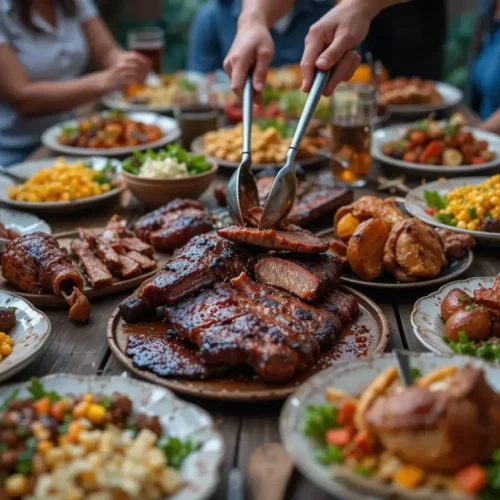
smoker recipes
Ingredients
Main Ingredients:
Meat of Choice:
- The beauty of smoking is that you can use almost any meat! Some favorites include:
- Whole chicken perfect for beginners!
- Pork ribs fall-off-the-bone goodness
- Brisket for an impressive BBQ centerpiece
- Beef short ribs or steaks smoked to perfection
- Salmon or trout for a smoky seafood twist
Dry Rub:
- A great dry rub is essential for adding flavor. You can either buy a pre-made rub or make your own! A basic rub might include:
- Brown sugar
- Paprika
- Garlic powder
- Onion powder
- Salt and pepper
- Chili powder for a touch of heat
- Tip: Don’t be afraid to get creative! Add your favorite herbs or spices like cumin mustard powder, or smoked paprika to tailor the rub to your taste. Massage it well into the meat for an even coat.
Additional Ingredients for Basting & Glazing:
Olive Oil or Melted Butter:
- Basting your meat with oil or butter while smoking helps it stay moist and adds a glossy finish to your finished product. A simple brush of olive oil or melted butter can elevate the flavor and texture.
BBQ Sauce (Optional):
- If you’re a fan of sweet or tangy sauces consider glazing your meat with your favorite BBQ sauce during the final minutes of smoking. This allows the sauce to set, creating a delicious, caramelized coating. Just be careful not to apply it too early—sauces with sugar can burn at high temperatures.
Wood Chips for Smoking:
- The right wood chips are essential for that distinct smoky flavor. Here are a few options depending on the flavor profile you’re after:
- Hickory: Offers a strong smoky flavor that works perfectly with red meats like brisket and pork ribs.
- Applewood: A milder sweet flavor, great for poultry like chicken and turkey.
- Cherry Wood: A subtly sweet and fruity wood that’s perfect for ribs or even vegetables.
- Mesquite: Strong and bold ideal for beef and other hearty meats.
Extras (Optional):
- Lemon Slices Fresh Herbs, and Garlic:
- For an added punch of flavor you can stuff your chicken or fish with lemon slices, fresh herbs, or even a few garlic cloves before smoking. This infuses your meat with aromatic notes that will surprise and delight your guests.
Instructions
Step 1: Prepare Your Smoker
- Before you do anything, you need to get your smoker ready. Whether you’re using a charcoal, pellet, or electric smoker, it’s important to get the temperature just right.
- Preheat your smoker: Aim for a steady temperature of about 225°F-250°F. This low-and-slow heat is what allows your meat to cook evenly and absorb that smoky flavor.
- Add wood chips: Soak your wood chips in water for at least 30 minutes (unless you’re using a pellet smoker). This helps create the ideal smoke. Choose the wood based on the flavor profile you’re going for (applewood for chicken, hickory for ribs, etc.).
- Set up a water pan: If you’re using a traditional smoker, place a water pan inside. This helps maintain moisture during the long smoking process and prevents your meat from drying out.
Step 2: Prepare the Meat
- Now, it’s time to prep your meat.
- Trim the fat: For most meats, you’ll want to trim any excess fat. While some fat is necessary for flavor and moisture, too much can cause flare-ups and uneven cooking.
- Apply the rub: Coat your meat evenly with the dry rub, making sure it’s well-covered on all sides. Massage it in gently for the best flavor penetration. Let it sit for at least 30 minutes to absorb the flavors.
- Optional basting: If you plan to baste your meat with oil, butter, or a glaze, now’s the time to brush it on. This adds richness and a beautiful glossy finish.
Step 3: Smoking the Meat
- Once your smoker is at the right temperature and your meat is prepped, it’s time to start the smoking process.
- Place the meat on the smoker: Position your meat on the grill grate, ensuring it’s not touching the sides of the smoker. You want a little airflow around it to ensure even cooking.
- Monitor the temperature: Keep the smoker temperature steady. Try not to open the smoker too often, as this can cause heat loss. Instead, use a meat thermometer to check the internal temperature of the meat without opening the smoker.
- Smoking time: The cooking time will depend on the type of meat you’re smoking. For example:
- Chicken: 1.5-2 hours
- Pork ribs: 4-5 hours
- Brisket: 8-12 hours
Step 4: Check for Doneness
- While smoking is relatively hands-off, it’s important to check your meat as it gets closer to done. Here’s how you can tell:
- For chicken: The internal temperature should reach 165°F.
- For ribs: Check for tenderness. If the meat starts pulling away from the bone and has a nice, smoky bark, it’s ready.
- For brisket: You want an internal temperature of about 190°F for tender, juicy meat that’s easy to slice or shred.
Step 5: Rest and Serve
- Once your meat reaches the perfect temperature, remove it from the smoker and let it rest for about 10-15 minutes. This helps redistribute the juices, ensuring your meat stays tender and moist when you cut into it.
- Slice and serve: After resting, slice your meat (if applicable) and serve it to your guests. Don’t forget to drizzle with some homemade BBQ sauce or a squeeze of fresh lemon if you’re working with chicken or fish!
Notes
- Calories: 350-450 kcal
- Fat: 20-30g
- Protein: 25-40g
- Carbs: 2-5g
- Fiber: 1g
- Sugar: 1g
- Sodium: 600-1000mg (varies with rubs and sauces)

